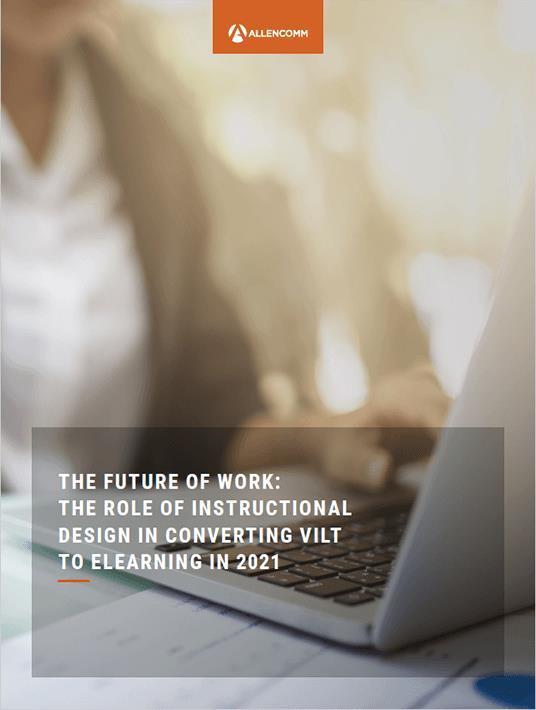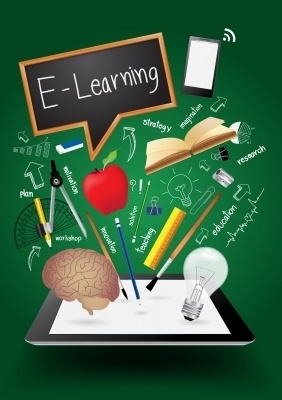Cultivate An eLearning Culture For Your New Virtual Work Environment
What is the future of work? In the last year, we’ve seen a rapid transition to a remote work environment as necessitated by the pandemic. This development was not without precedent; many organizations were already adopting technology for many reasons, including to increase the flexibility of where and how people work.
This adoption is accelerating. In fact, studies are showing that much of the workforce – more than half, at least – will continue after the pandemic to work remotely on a full or part-time basis. This development makes sense, in that both employers and employees alike are finding benefits to the adoption of a virtual, remote workplace facilitated by technology. For example, many organizations find an increase in employee productivity associated with remote work, as well the opportunity to attract talented candidates not constrained by geography.
Employees also appreciate the flexibility of a remote workplace, and increased opportunities to work for organizations outside of their communities as well. The result is that Learning and Development (L&D) organizations will have a new, increased role to play in the future of work. L&D professionals will see opportunities to prepare and sustain organizations completing the move to a fully-hybrid workplace environment.

Transitioning To A Hybrid Workplace
When we say hybrid, we mean a mix of remote and in-person work. But the transition to a hybrid workplace won’t be without its challenges. Many organizations are already finding the change to adopt remote work has been problematic, in that so far the primary shift has been to hold meetings online and communicate through email and chat. In essence, the quick first step to the remote workplace was taken quickly without an intentional design. But it doesn’t have to stay that way. We now have an opportunity to carefully plan the remaining transition to hybrid workplaces, and build environments that work well for organizations and their employees.
Why Your Organization's Brand Must Include eLearning Culture Designed For The New Virtual Environment
Over the last year, the pandemic and the rapid move to a virtual workplace environment changed everything. While there is no expectation that the move to a more digital work environment will change, we need to carefully reconsider all the rapid decisions that were made in times of crisis.
With our economy quickly accelerating into the virtual environment, creating an eLearning culture as part of your organization’s brand and overall strategy has never been more important. Use of VILT, or virtual instructor-led training, just isn’t enough to keep virtual teams connected in the digital space. With over half of the workforce now working remotely, employees have an increasing need to feel heard, seen, engaged, and involved.
When your organization embodies a learning culture that supports and encourages personal and professional employee development, your organization benefits from increased employee performance and a workforce that feels as if its company has invested in their individual success. Your employees will feel a stronger sense of community and connection. Establishing this kind of virtual learning culture pays increasing dividends as the culture strengthens.
There are many benefits to having a strong learning culture. For instance, a strong learning culture attracts skilled employees and gets them to stay. Research shows It improves engagement more than rewards and recognition, work/life balance, and more fun perks like donuts on Friday or foosball tables. Most importantly, a strong learning culture will improve – directly or indirectly – your organization’s bottom line.
The True Cost Of Employee Development
On the other hand, it can be dangerously expensive to ignore the learning culture created for virtual teams and the virtual environment with your organization. Just consider the following data:
- New hire training and onboarding cost up to 30 percent of an employee’s annual salary
- For an employee with an annual salary of $40,000, that cost is roughly $12,000 per employee on average
Based on those numbers, the expense could equal one-tenth the cost of a new hire.
So, continuous development within a strong learning culture is a safe bet for reducing employee turnover. Moreover, a culture within a virtual environment in which virtual teams and individual employee development is supported and tied to career growth improves employee morale and motivation, saves on new hires by promoting from within, and helps everyone keep pace with rapid change in industry and technology.
However, creating a learning culture requires more than understanding its importance. It requires clear messaging setting expectations for ongoing learning in the virtual environment built into your organization’s very brand. This entails both top-down and bottom-up determination, skill, and strategy.
Recreating Your Brand: Best Use Of VILT In The Virtual Environment
No “culture” is born overnight. It evolves gradually from repetition, cultivated by the right conditions. Before you can implement any learning, you must establish these three conditions, and in this order:
Invite Input for Mutual Buy-In
While change demands commitment from senior leadership, it must be reciprocated by the organization as a whole: from senior leadership to middle managers and from middle managers to entry-level employees. Senior leaders need to initiate consistent and continual communication, message their coaches and managers, and sponsor the necessary training programs making best use of VILT to avoid Zoom fatigue, burnout, and disengagement from virtual teams.
Managers must provide encouragement and recommendations, set up systems of accountability, and establish a mentoring/coaching loop for their team members. And those working on the ground level should be paired to provide peer-level feedback and mentor new hires or struggling associates.
However, while this continual and consistent top-down buy-in is a given (though difficult) first step, gaining bottom-up buy-in and input is largely ignored among organizations trying to establish impactful learning programs. Inviting learners to actively participate in their development programs and offer feedback early on is crucial to building motivation around this transformation.
Depending on their point-of-view on eLearning, remote employees can more easily become change agents and influencers if they were involved in the early stages of learning development within the virtual environment. On the other hand, they can also contribute to both social factors and internal processes that detract from the learning experience. Often there are people or practices in place that make theses transformations more difficult. Essentially, a learning culture will only be as strong as its weakest links.
Define A Differentiator Of Ongoing Learning
Think of your organization’s brand vales, brand promise, or mission statement. It likely outlines answers to questions like:
- What sets you apart?
- What distinguishes you from your competitors?
- Finally, what makes your employees and their work exceptional?
Your answers to these are your brand’s differentiators. But, does employee development, continuous learning, and support for remote work fit within those values? Just as you would market company values to customers, internal employees should understand that the organization values learning. So, consider adding to the brand you portray, and align that messaging with internal communications.
Establish Protected Time For Learning
What good are learning assets—especially among busy employees—if no one has time to seek out and consume learning opportunities? This is true for learners, but also applies to managers, mentors, or coaches. You should set time aside that is strictly for learning, and digital resources to promote flexibility. This also communicates a clear message to employees: “We at this organization take learning and your development seriously.” It turns out, employees will then take it seriously, too.
Actionable Tactics For Creating A Learning Culture
When it comes to the best practices in training methods and training implementation, you must take a systematic approach. Consider the following tactics:
Set expectations and create a system of accountability
Employee training and development is most effective when there is a formal structure in place and clearly defined expectations for participation within that structure. For a start, you can implement expectations within your Human Resources department as a best practice. Additionally, this can be as simple as scheduled follow-ups. While there is nothing revolutionary about one-on-ones, the process can make the difference between mediocre and great performance. It adds accountability to the process of learning.
That being said, training technology can certainly lend to accountability as well. Through detailed analytics and well-designed performance evaluations, you can more easily measure and report on training ROI (e.g., increases in revenue, employee retention, decreased training time, employee performance, etc.)
Set up a system of support from managers, supervisors, and/or coaches
Support needs to come from leadership, which is often in the form of one-on-one meetings. However, those meetings must be aligned with formal learning activities as well. For instance, on-the job shadowing, stretch assignments, peer cohort activities for a virtual team can be timed to follow up an eLearning course.
Create a Central Learning Hub or Repository
In order for your learning culture tactics to be cohesive, there should be one place in your virtual environment that houses all of your digital learning content, performance support assets, and informal learning assets as well. Often this is a learning portal or learning management system, but simple platforms like OneDrive can also act as training catalogs. In that case, you may miss out on some of the gamification features and social sharing functions that have become common to training technology platforms, but it can be an easy low-tech solution.
Having these resources in place will reduce the amount of time and stress employees experience during their learning journey. Moreover, the time saved will allow the learners to spend more time using what they learn in their workflow.
Conclusion: How To Create An eLearning Culture For Remote Workforce Development
Perhaps the most important takeaway is that for an eLearning culture to become part of your brand, you must have a structured strategy to involve employees at all levels within the company. Beyond simply engaging in VILT training, a systematic approach to learning culture creates a cohesive learning ecosystem and virtual environment that pairs formal learning like custom eLearning within formal activities like mentoring and coaching.
The process of digital transformation is slow and demanding but leads to a tremendous pay-off. Download the eBook The Future of Work: The Role of Instructional Design In Converting VILT To eLearning In 2021 to discover the challenges of learning in a virtual environment, and solutions to engage the workforce using instructional design best practices.









